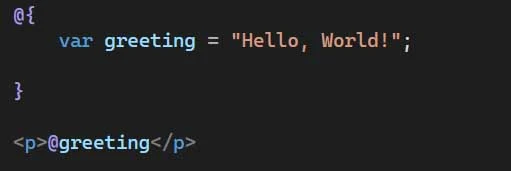Interview questions and answers related to ASP.NET Core, Razor views, controllers, layouts, and C# code within HTML:
What is ASP.NET Core?
ASP.NET Core is an open-source, cross-platform framework for building modern web applications. It enables developers to create web applications and services that can run on Windows, macOS, or Linux.
What is Razor view in ASP.NET Core?
Razor view is a markup syntax used to combine server-side C# code with HTML to generate dynamic web pages. Razor views allow developers to write clean and readable code by seamlessly integrating C# code within HTML markup.
What is a controller in ASP.NET Core?
A controller in ASP.NET Core is responsible for handling incoming HTTP requests and generating appropriate responses. It processes user actions, interacts with models and databases, and returns views or data to the client.
What is a layout in Razor views?
A layout in Razor views provides a consistent structure and design for multiple views. It defines the common HTML elements, such as header, footer, navigation, etc., that are shared across different pages. Layouts allow developers to maintain a consistent user interface throughout the application.
How do you pass data from a controller to a view?
Data can be passed from a controller to a view in ASP.NET Core using the ViewBag, ViewData, or strongly-typed models. ViewBag and ViewData are dynamic objects that allow you to store and retrieve data, while strongly-typed models provide a type-safe approach by defining model classes and passing them to views.
How do you create a new Razor view in ASP.NET Core?
To create a new Razor view, you can right-click on the desired folder in Visual Studio or your preferred code editor, select "Add," and then choose "View." Specify the view name, select the desired template (empty, list, create, etc.), and click "Add."
How can you use C# code within HTML markup in Razor views?
You can use C# code within HTML markup in Razor views by enclosing the code within `@{ }` or by using the `@` symbol for inline expressions. For example:
What is the purpose of the @model directive in Razor views?
The `@model` directive in Razor views is used to specify the type of the model being passed to the view. It allows you to use strongly-typed models within the view, providing IntelliSense support and compile-time type checking.
How do you create a new controller in ASP.NET Core?
To create a new controller in ASP.NET Core, right-click on the desired folder in Visual Studio or your preferred code editor, select "Add," and then choose "Controller." Specify the controller name, select the desired template (empty, API, etc.), and click "Add."
How do you specify a layout for a Razor view?
To specify a layout for a Razor view, you can use the `@layout` directive at the top of the view file. For example:
These questions cover some fundamental concepts of ASP.NET Core, Razor views, controllers, layouts, and using C# code within HTML. It's always a good idea to study further and explore additional resources to deepen your understanding of these topics.
What is a Layout in Razor Views?
A Layout in Razor Views is a shared template that defines the common structure and design of multiple web pages in an application. It contains the common HTML structure, header, footer, and other elements that remain consistent across multiple pages. Views can specify a Layout to inherit from, allowing them to provide content within the defined structure.
How can you pass data from a Controller to a View in ASP.NET Core?
Data can be passed from a Controller to a View in ASP.NET Core using ViewBag, ViewData, or strongly-typed models. ViewBag and ViewData are dynamic objects that allow you to store and retrieve data within the Controller and access it in the corresponding View. Strongly-typed models involve creating a custom class to represent the data and passing an instance of that class to the View.
What is the role of the @ symbol in Razor Views?
In Razor Views, the @ symbol is used to switch between HTML markup and C# code. It allows developers to embed C# code within the HTML markup and vice versa. For example, @Model.PropertyName is used to display a property value from the model, and @{ ... } is used to enclose a block of C# code.
How can you include C# code in HTML markup in Razor Views?
C# code can be included in HTML markup in Razor Views using the @ symbol. For example, you can use @if, @foreach, @switch, or @Html helper methods to write conditional statements, loops, and generate dynamic content.
How can you use C# code to generate HTML elements dynamically in Razor Views?
You can use C# code in Razor Views to dynamically generate HTML elements by using loops, conditional statements, and HTML helpers. For example, you can use a foreach loop to iterate over a collection and generate HTML elements dynamically based on the data.



No comments:
Post a Comment